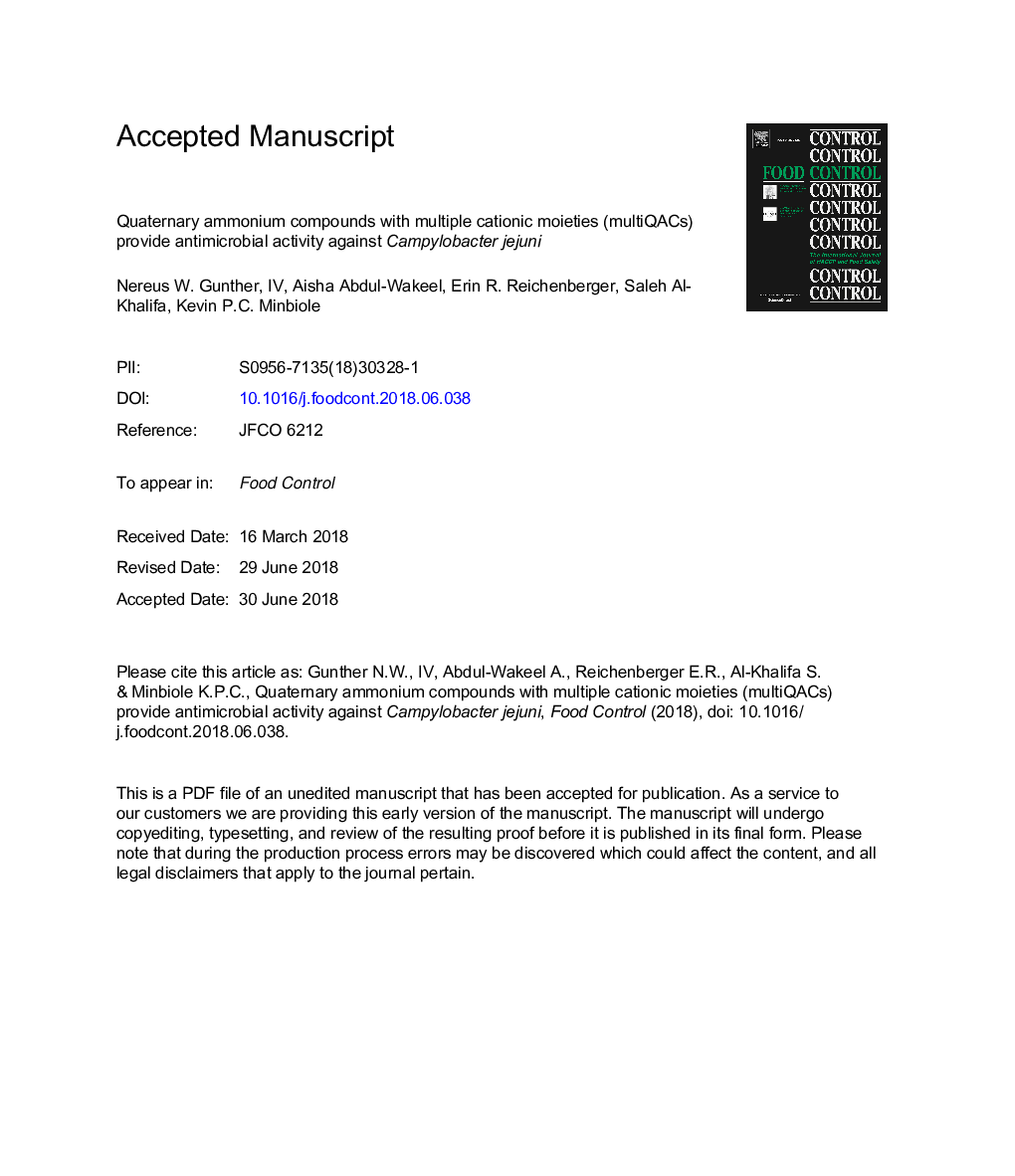| کد مقاله | کد نشریه | سال انتشار | مقاله انگلیسی | نسخه تمام متن |
|---|---|---|---|---|
| 8887740 | 1628370 | 2018 | 34 صفحه PDF | دانلود رایگان |
عنوان انگلیسی مقاله ISI
Quaternary ammonium compounds with multiple cationic moieties (multiQACs) provide antimicrobial activity against Campylobacter jejuni
دانلود مقاله + سفارش ترجمه
دانلود مقاله ISI انگلیسی
رایگان برای ایرانیان
کلمات کلیدی
موضوعات مرتبط
علوم زیستی و بیوفناوری
علوم کشاورزی و بیولوژیک
دانش تغذیه
پیش نمایش صفحه اول مقاله

چکیده انگلیسی
Recently developed quaternary ammonium compounds (QACs) possessing multiple cationic moieties, referred to as multiQACs, were tested with strains of Campylobacter jejuni to determine their potential as antimicrobial compounds against this important foodborne pathogen. Eight multiQACs were tested against a cocktail of six C. jejuni strains isolated from environmental and clinical sources. The resulting reductions in C. jejuni numbers mediated by the multiQACs were compared to the reductions produced by the application of four commercially available QACs, each of which bears a single cation. Multiple concentrations and exposure times were utilized for all compounds. The compounds which yielded the maximum C. jejuni reductions at the lowest concentrations and applied over the shortest exposure times were judged to be the most successful. Of the eight multiQACs investigated, four demonstrated reductions in C. jejuni numbers superior to the commercial QACs; these four are biscationic, and two of them bear an additional uncharged nitrogen atom. The remaining four multiQACs, which contain three or four cations, did not produce reductions in bacterial numbers comparable to commercial QACs in the timeframes tested. At the intermediary compound concentration (0.05â¯mM) and exposure time (5â¯min) the most effective multiQACs (PQ-12,12 and 12(3)0(3)12) on average killed over 99% of the Campylobacter cells present while the best commercial compound at those parameters (cetyl pyridinium chloride, CPC) only killed on average 84.56% of the Campylobacter cells. At the highest compound concentration tested (0.1â¯mM) and shortest exposure time (1â¯min), the same two biscationic multiQACs averaged mean percent reductions of Campylobacter cell numbers around 99.5% while CPC at the same concentration/exposure only managed a percent reduction of 91.3%. The biscationic multiQACs demonstrate the potential for providing a new group of antimicrobial compounds superior to current commercially available QACs in their effectiveness against C. jejuni.
ناشر
Database: Elsevier - ScienceDirect (ساینس دایرکت)
Journal: Food Control - Volume 94, December 2018, Pages 187-194
Journal: Food Control - Volume 94, December 2018, Pages 187-194
نویسندگان
Nereus W. IV, Aisha Abdul-Wakeel, Erin R. Reichenberger, Saleh Al-Khalifa, Kevin P.C. Minbiole,